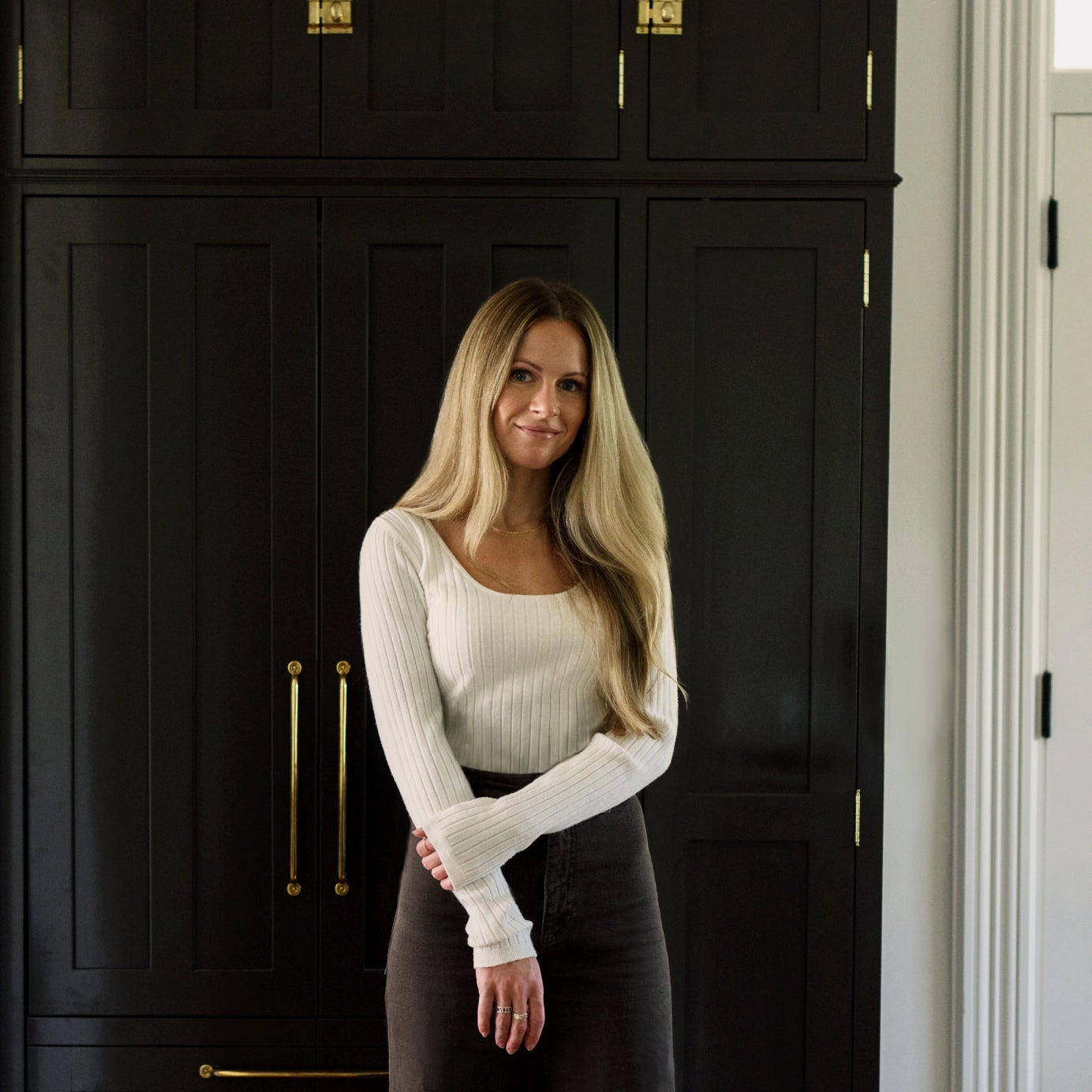The 50 States Project is a series of candid conversations with interior designers across the country about how they’ve built their businesses. This week, Salt Lake City–based designer Alex Adamson tells us how switching to hourly billing simplified her business, why it’s tough to nab an older home in her market, and why creative freedom has been worth every challenge of entrepreneurship.
What pushed you to launch your own firm?
I can tell you the exact moment. It was in the summer of 2020, and I was working for another design firm. It was an amazing job, and I’m so glad I worked there, but I felt stagnant—I was comfortable, and I was making more than I’d ever made before, but I just didn’t get the sense that my design skills were progressing. I was taking small freelance projects on the side, but I just wasn’t fulfilled the way I needed to be creatively.
I’ve always been someone who wanted to work for myself. I have two entrepreneurial parents, so that’s just the route I’ve seen. So I was at my day job, and I was telling a coworker who was a close friend how I had just gotten this freelance project that was too big for me to take on with a full-time job. I remember saying to her, “This is so sad, because I want to take this project, but I can’t.” And she was like, “Well, why don’t you just go out on your own and do it?” It was this lightbulb moment of, like, “Oh, I guess I could do that.”
Sometimes someone else saying it out loud can give you so much validation and confidence.
I think that was it, because I said yes to that project and gave my notice that week. I only had that one project in the beginning. It was a fairly big remodel for the nicest clients—not a whole overhaul, so it’s not like it was going to carry me through the next couple years, but it was enough to do a few months of really solid work and survive on that, and then go from there.
How did you start to build enough business to sustain the firm?
Pretty quickly I got a call from someone I had worked with at a previous design firm. I had designed her first home, and she called me to say that she was selling her house and they had bought a new lot and wanted to build. So in some ways, it was like working with a repeat client—and that project has taken about four years; we just finished up. The rest were all word-of-mouth referrals. I even got a job from another designer who was too busy at that time, for another great client with a full build and furnishing job. That was all within the first six months or so, and then it just kind of built from there.

You had worked at several other firms before launching your own. Where did you look to build your own systems and structures at the beginning?
I am so happy that I worked for other people. I get a lot of questions from people who want to start in interior design for the first time—maybe they’re pivoting from something else. And while I would never discourage someone from that, because I pivoted—I started in graphic design—I think that working for other design firms, and especially working for more than one, was the biggest help for me. I could not believe how different each place was: their processes, their way of designing, everything. And a lot of what I do now is a combination of what I experienced.
You get to cherry-pick what you liked best from each firm?
Yes, exactly. I am also a podcast addict, so a lot of my processes have also come from podcasts.
Tell me about your pivot from graphic design into interior design. How did you make that transition?
I knew I wanted to be in a creative field, but I also knew I wasn’t a fine artist. I loved photography, but didn’t want to make that my profession. In college, I fell in love with graphic design, and then I moved to New York and worked in that field for about five years for different fashion retail brands. At first, I thought I was going to stay in that and love it, but then it just was not quite doing it for me. I knew I was drawn to spaces, but I didn’t know how I was going to make that pivot.
I ended up getting a job for an architectural firm in California—I think I bugged them for six or seven months. They have a very holistic approach, where they are doing everything from branding to the actual architecture and interior side, and everything is in-house. I was there for a couple of years, at first doing branding on the graphic design team. But we were having all of these vendors stop by for the interiors side of the business, so I was learning about fabric, tile and furniture from the best vendors in Los Angeles, and I was so drawn to it the more I learned.
I kept asking the interiors team, “Hey, can I help with furniture?” I started to learn CAD at that time because I realized that’s what they were using. And after I had built up enough experience there, I found a firm here in Utah, where I’m from, that was willing to hire me full-time for interiors. I came and worked for them for a couple of years, and then I went to the next firm, also in Utah, before I went out on my own.
Did you see different ways to scale a design firm at each office?
They were very different in every way. The first one that I worked for is pretty big—they also have a store and are big on social media. I think I was employee number 35, but I watched the firm grow to have hundreds of employees.
The second firm that I worked for was kind of the opposite in every way. It was intentionally a very small team, with higher-end clients, bigger budgets and a more elevated approach. I really identified with that boutique feel, and I loved the way my boss there was able to be involved in every detail.
How did that inform the kind of firm you wanted to build?
I wanted to stay small. I have so much respect for the boss of the large firm, and I think she’s doing exactly what she wants to do, but I didn’t want that life. My goal isn’t to have a huge business—it’s to have projects that I’m excited about and to be involved in the design. I want to keep it small enough that I can ensure the quality of each project.
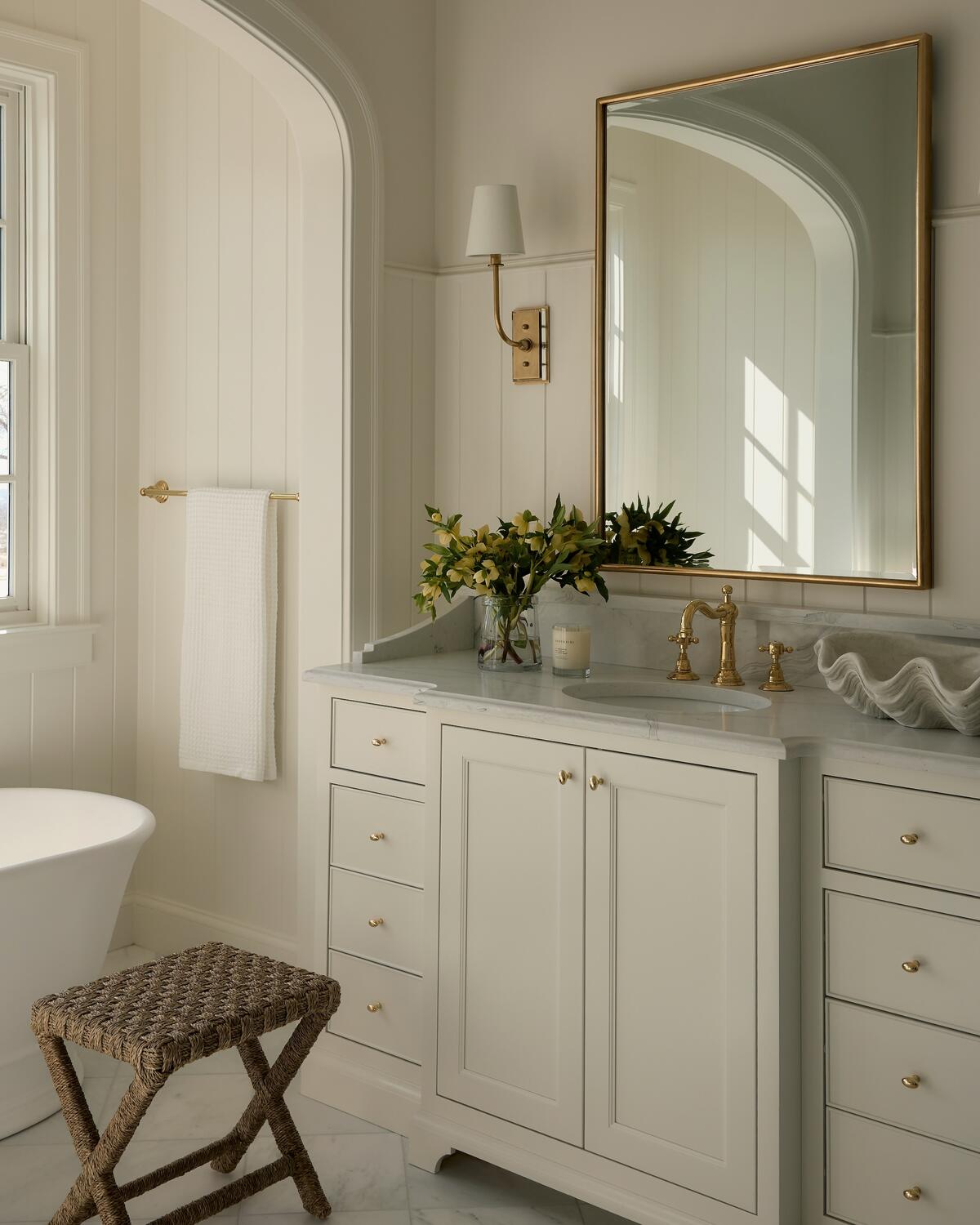

How have you approached growth so far?
Very slowly. I barely have three employees—meaning one is pretty part-time. Typically I’ll have an assistant, a junior designer and then a part-time ordering manager.
Who did you hire first?
I hired a personal assistant first. I feel like maybe that’s not the norm—typically you hear of people hiring another designer—but I just felt like if the design is what I love, I’d rather hire for the business or communication side where I was really needing help. At the beginning, the assistant was also doing quite a bit of order tracking; when it got to the point where that role could split in two, we brought on the ordering manager. And then when I felt maxed out on projects, and a new project came into my inbox that I was really excited about, I finally hired a junior designer. Each hire has been a game changer for me.
Do you imagine the firm growing much larger?
Potentially a little, but I want to keep a slow, steady pace—I never want to feel forced into taking work that I’m not excited about [just to fill my employees’ time]. It’s also important to me to pay people well: In Utah, but probably elsewhere too, I think designers are very underpaid, so that’s been really important to me. I’ve hired slowly in part because I want to be generous with my employees, and that’s just easier to do with a smaller team.
You talked about leaving a role because you felt you weren’t going to be able to grow creatively. How are you thinking about creating room for your team members to grow?
I think about it a lot. I try to have regular check-ins to keep a pulse on where they’re at. I try to give enough responsibility that hopefully they feel like they’re growing. And as much as I want them to stay loyal to me, and as much as I try to let them know that they are so appreciated—because they are—I also try to let them know that if there’s a point where they outgrow this, I don’t want them to be afraid to have that conversation with me. I hated feeling sick when it was time to tell my bosses that I wanted to leave. Some of them were very gracious about it, and some of them were not so much—I had both experiences. So it’s important to me that they feel appreciated but also respected.
As your team grows, where do your clients see you, and where do they interact with your team?
I’m very client-facing, so it’s primarily me, and I’m at pretty much every site visit, but I’ve slowly gotten clients used to communicating with my team members as well. I’m still trying to work on delegation.
What’s the pain point there? Is it about feeling comfortable giving away the work, or is it about the client really wanting face time with you?
It can be both. It is a delicate balance. I want to make sure the clients feel like they are working with me, but I also want them to trust the team, because I obviously picked that team for a reason. I think there’s also an element of control on my end that I need to work on. But I do take a lot of pride in the quality of the projects and how involved I am, so I don’t want to give that up fully.

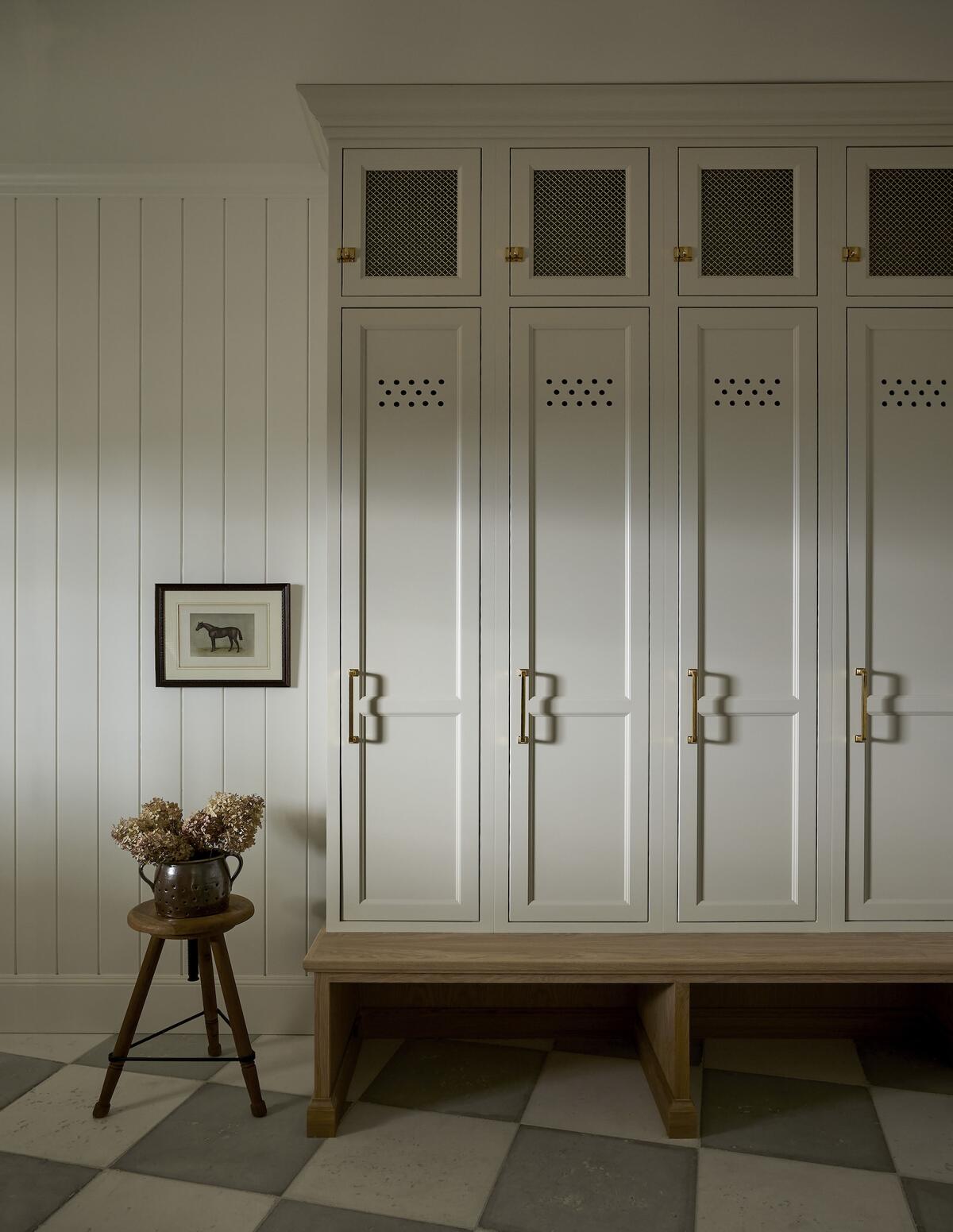
What projects make you excited? What makes you want to say yes to a job today?
The main thing I look for in a client is if they are excited about my approach. What I get excited about is what I call a “new home, old soul” approach. I love a house that feels like you’re not exactly sure when it was built. I want it to feel new, but at the same time, I want to make sure they’re excited about infusing a little bit of that old-soul feel with vintage pieces and warmer-feeling items. I don’t think that has to be a traditional home; a modern home can still have an old-soul feel. I get excited if they are on board with thinking about things like, “What’s the character of this home? How do we stay true to it? Does it feel right for its location?”
How do you talk about the financial investment it will take to get there with a client?
That’s a work in progress. I was charging a flat fee plus a markup when I started—which, for some people, turns out great. For others, it’s a terrible idea. I’m charging hourly now.
I think setting expectations early on and as clearly as possible has been the best thing for me. I send out furniture minimums saying, “If you’re wanting to work with me, this is what it typically takes per room,” and I break it down into a living room versus a bedroom. The goal is to communicate that they should be comfortable spending at least a certain amount per space. I also break down our hourly rates pretty clearly among all the different roles and give an estimate of hours per space. That’s all to set an expectation of, “Be really comfortable with this number.”
You want them to see the big number from the jump.
Always, because that’s what it will end up being. It’s very rarely less. And if they’re not comfortable seeing that big number now, and they just want a little hourly here and there, that’s not going to be super successful. I always try to give an estimate that is on the higher end of the range of what they can expect so that they don’t ever feel like they got in over their head.
I see that a lot with builders. I think builders often sign on clients by saying, “We can get it done for this much.” But that’s not really what they’re asking. There’s a difference between how much it will take to create what they want and how much it will take to get it done.
How did switching to hourly transform your firm’s finances?
It’s opened things up. I mean, pretty much every project goes beyond its original scope. When I was in a flat fee situation, I would find myself having to think through, “How do I add this on? Or do I need to have a conversation with them about starting an hourly fee?” I just felt like it was getting in the way. Now that I’m set up to bill hourly, the client knows what it’s going to be when they ask for something additional. They’re not like, “Oh, can we sneak this in as a part of your flat fee?” No one feels like that if it’s just out on the table.
How many projects are you working on at a given time?
I think that six is really our sweet spot. Anytime it’s gotten over that—there was a time when it was 10—did not feel manageable for me at all. That happened because I was signing on projects thinking others would wrap up sooner, and they just didn’t, so all these projects sort of collided. I never intended to be taking on that many! Now I would say no more than six at a time. Typically a couple of those are wrapping up, a couple of those are starting, and a couple of them are in construction. That’s where I like to be.
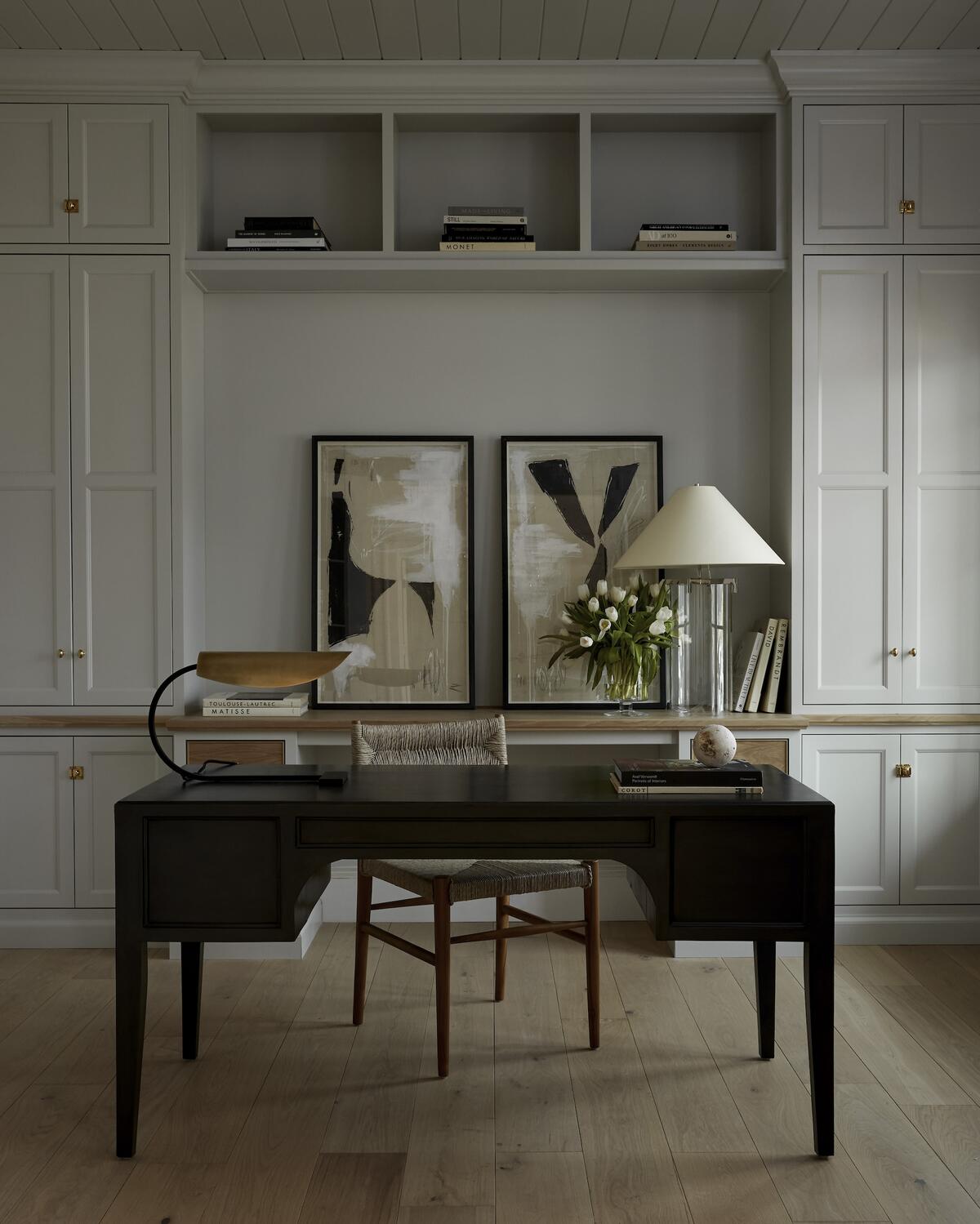
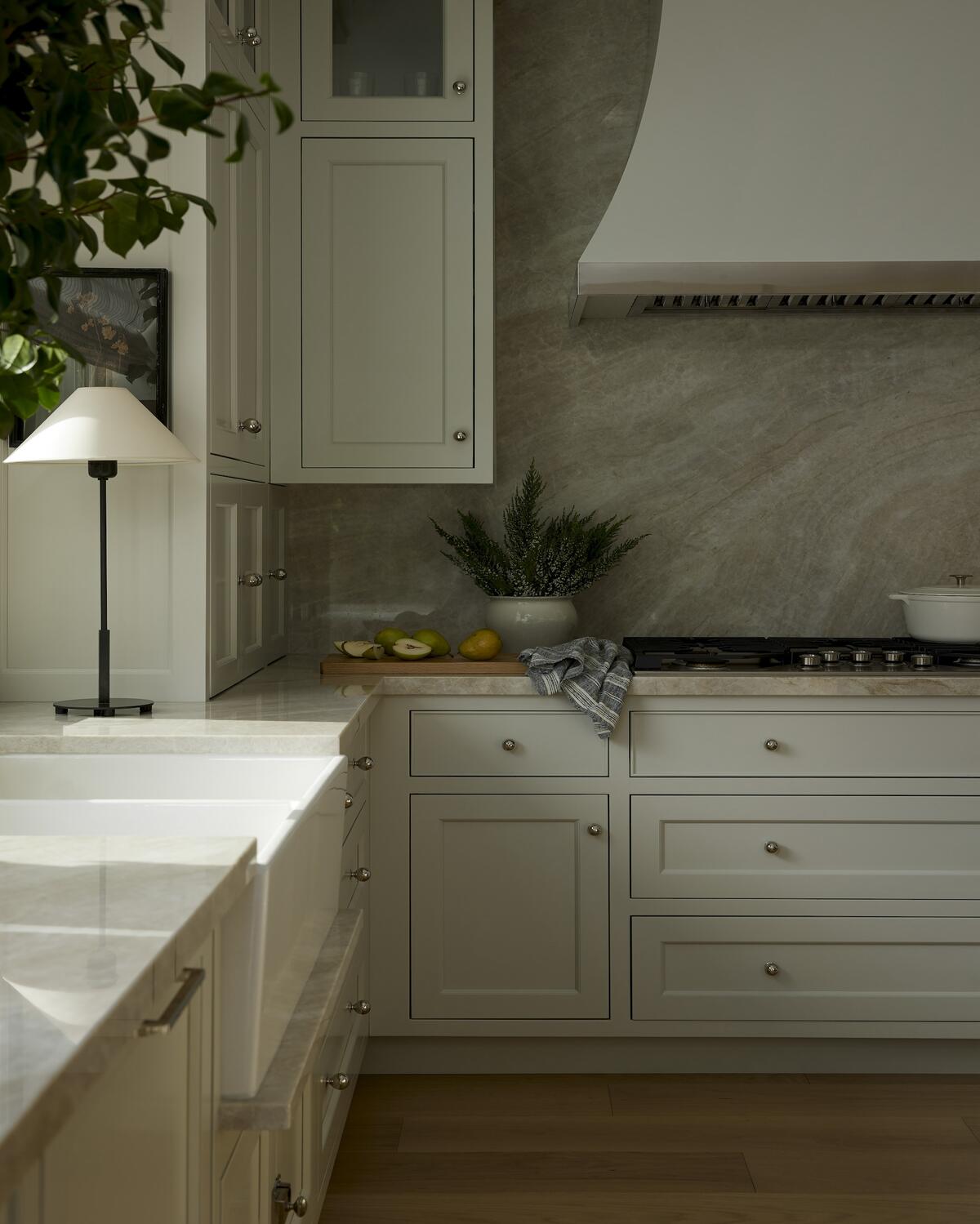
Can you tell me how being in Utah has shaped the opportunities that are coming your way?
Utah is a crazy hot spot for design. Honestly, I think it probably has to do with social media being such a thing here—a lot of influencers are based in Utah, and there are a lot of design- and aesthetic-minded people here. There’s a huge community that’s very interested in design in all forms, including fashion, and that translates well to home.
The community is great. There are a lot of great designers here, and there’s quite a lot of good work. It’s nice to be in a spot where people are building. I have friends in California who are often solely doing remodels. And there’s nothing wrong with that—it’s just a different type of project. Out here, there are a lot of large new builds.
My understanding of the real estate market in Salt Lake City is that there aren’t a ton of older properties to renovate. Is that fair?
Yes, very fair. I’m on the hunt for one right now, actually. I want a historic home for myself, to remodel, and it is so hard to find.
Were they just not built, or have they not been preserved?
As the housing needs exploded in Utah, that resulted in a lot of builder-grade homes. You see a lot of really large, cookie-cutter neighborhoods. To find a more established neighborhood with homes and trees that have been there a long time is rare. The nicest neighborhoods are tucked along the mountains with these little pockets of historic homes that are really beautiful, but they’re just hard to get into, and people who are in them stay put. Those don’t often come up for sale.
Are the new builds you’re doing on new lots? And what do those jobs look like?
My projects are all pretty much on new lots. The average project we’re working on is 8,000 square feet. Several are larger, closer to 10,000 square feet. My largest is 17,000.
Where do you shop, and what sort of resources are available locally?
The retail side is very far behind the need in Utah. There are very few showrooms here—we have a few good fabric showrooms and a couple of slab yards, but not a lot. That means that markets are very important to me. I go to High Point Market and Round Top, and I rely on a lot of trade vendors.
Is there a challenge in helping clients make the leap of faith to buy things they’ve never seen?
I’m almost surprised to say no, but that really hasn’t come up too much. My clients have been very trusting. Sometimes I’m the one who’s like, “Are you sure? You haven’t sat on this or seen it.” But we always try to show fabric samples, and I’m really big on detailed drawings—we try to show them as much as we can.
How much are you rendering or drawing out in your presentation?
Our drawing packages are huge. Any wall elevation where we need to show cabinetry gets drawn, as well as detailed furniture and space plans, and any other key elevations. If you want artwork on a certain wall, we’ll draw it out to make sure the scale feels right. We want to show the tile details, so we do the shower walls. Mantels and fireplaces, all of that is drawn by us.
Are you leaning on photorealistic renderings as well, or staying 2D?
I don’t love renderings most of the time. I’ll outsource those for an exterior, and that’s great, but I don’t like the way they feel for the interior. As far as they’ve come, and they can look so beautiful, you can always tell it’s a little AI—you just know it’s fake. And sometimes I think it throws clients off more, or that it does more harm than good. The colors and finish don’t translate exactly right. For the interior, I like doing 2D elevations and then showing all the color boards and samples. I think making clients use their imagination is good.
How long have you been on The Expert, and how has it impacted your business?
I think it’s been two years, and the consultations I’ve done have been great. There’s such a huge variety of clients [on the platform], and I’ve gotten to work with more clients out of state, which has been really fun. I like the small, quick design explorations, because it’s such a change of pace from my typical builds that go on for years. And I’ve actually taken on two full-service projects because of meeting with clients on The Expert, both out of state.
Is it meaningful revenue?
It could be more meaningful if I did it more often, but it is a pretty good hourly rate. It's much more than I typically charge. It’s been very beneficial in that way, because if someone pays my hourly rate on The Expert, they’re a bit more comfortable with my hourly rate for an ongoing project.
What role has social media played for you in the firm’s success?
Well, that’s how I got onto The Expert. I’ve also been able to connect with a lot of designers that way, and I’ve loved that opportunity to make friends with people who aren’t in my city. I like the community I found, and I’ve felt very supported by other designers, so I try to do the same.
Is your feed all you?
I had a freelancer help me make a content schedule for a short period of time, but ultimately, it’s been me. That has been difficult when I get too busy, because it gets pushed to the side, but I am trying to focus a little bit more on posting. I focus way more on Instagram than on my website—that hasn’t been updated in years.
Why is that? How do you approach documenting your work and having a digital footprint online?
Photography is very important to me. I think that whatever the platform is at the end of the day, all you have to share of your work are photos, so I always put my money there. I try to pay for good photographers and good stylists. When I spend a little more on the styling, it has majorly paid off—that’s definitely advice I would give to other designers—to be willing to pay a bit more for that.
I think I cried when I got my first [professional] photos back because I just couldn’t believe that I’d done years of work and was looking at 20 images. It’s shocking.
I thought you were going to say you cried when you got the bill.
Well, that too. I did cry knowing what the bill was, going into it.

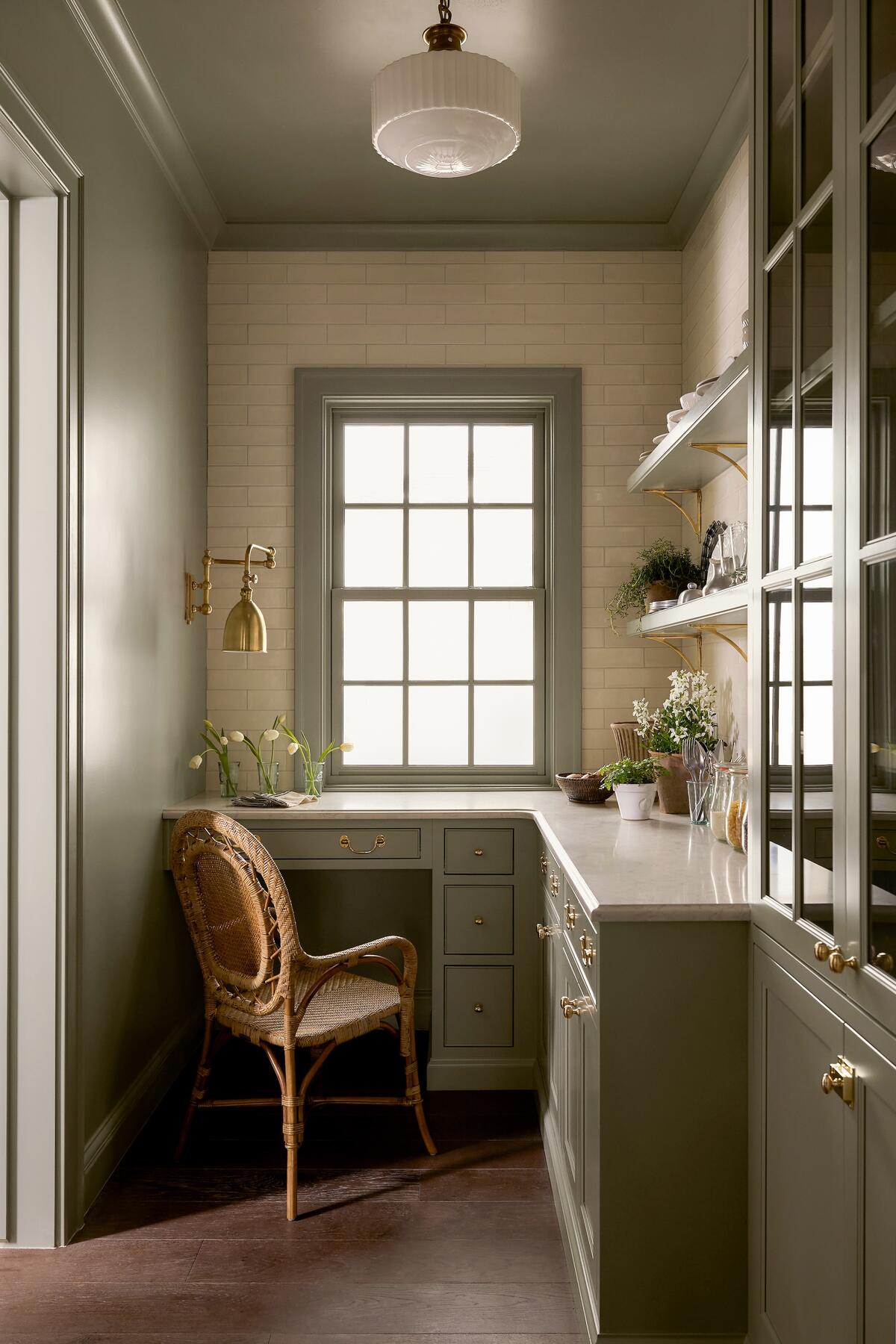
When you look ahead, what is the biggest challenge you see for your firm?
I’m always just looking at making sure our bandwidth is right—that we have enough but not too much, and that we really can interview for new projects properly. It’s not just the client [that needs to be a fit], it’s also the build team. It’s something that I think about a lot, because one really bad project can kind of take down your whole firm. I’m very cautious about taking on new work.
What is one thing you know now that you wish you had known back in 2020 when you were about to start your firm?
Oh, it’s almost better that I didn’t know. I got really scared to take that first step because I thought I had to have everything worked out before I could start. If I could go back, I would tell myself, “Just start.” You don’t need to have everything figured out. You don’t even know what you need to have figured out at this point! It will come as you go through it, and you’re not going to learn what you need to know without getting started.
In the end, did you feel like you had the tools you needed?
I did. I’ve also gained confidence over the years. That’s another thing I would go back and say to myself. I was so scared to not have a big firm backing my decisions. In my previous roles, when I suggested something, it wasn’t just me—it was also the firm. And that was a big mental shift, learning to trust myself. I would tell myself to back my decisions sooner. I waffled a lot more when a client would question something in the beginning.
What changed for you?
I think it’s just experience, and seeing over time that if you don’t back yourself, it’s detrimental to the rest of the design process. The client is searching for confidence and expertise—that’s what they’ve hired you for. If you can confidently back your decisions, they’re much more likely to trust your future decisions. But if you fold on the first one they question, they’re a lot more likely to question every decision from there on out.
That’s really powerful.
It’s been very eye-opening for me. At first, I thought it would be pushy or maybe even rude to say, “No, I really think you need to go this direction.” I thought I was overstepping. But it’s actually so beneficial.
And that’s what they want.
Yes, it’s what they want. But it took me a long time to realize that.
What does success mean to you today?
Success for me means getting to work with great people, on the employee side and on the client side. It’s about being excited about what I do and getting to create beautiful things.
You started your own business in pursuit of more creative freedom. Have you found it?
Oh, hugely. And on my own, I find so much more inspiration all around me. Being the only one responsible, and having my name attached to it, has been so empowering. I’m constantly looking around, and I feel like I look at things a different way. I take it all in a lot more. I don’t think I did that when I was working for someone else.
To learn more about Alex Adamson, visit her website or find her on Instagram.
















